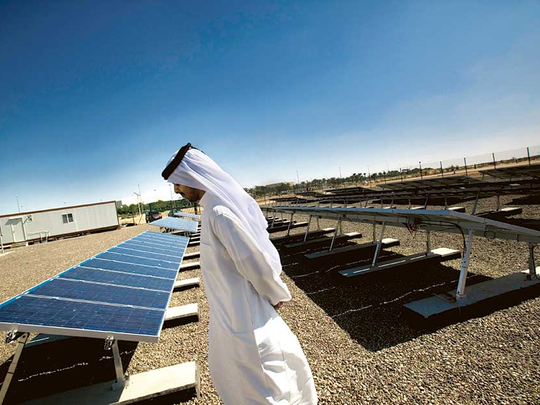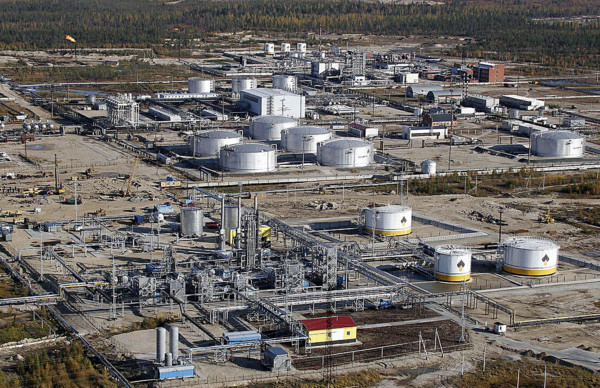
Last week I discussed the oil and gas investment in the light of falling prices as analysed in IEA’s “World Energy Investment 2016”.
Investment levels weren’t satisfactory. But it was not in a free fall either in spite of macroeconomic uncertainties that affected demand patterns at a time of “accelerated technological change” and “increasing inter-fuel competition”.
These predicaments, and others, affected investment in other energy sources as well.
Investment in coal fell to only 4 per cent of the $1.8 trillion (Dh6.6 trillion) energy investment in 2015 after the fall in coal demand in China and the US. Yet, “coal retained its position as the world’s second-largest primary fuel” though it is affected by climate change policy in many countries.
The overall economics and lower prices of coal are the main factors driving investments in coal-fired power generation in Asia.
“In 2015, China invested nearly $45 billion in fossil fuel power generation, mostly coal, and brought 52GW of coal capacity online,” said the IEA report.
Asian countries importing LNG found the investments in gas power generation was twice as expansive of that on coal.
Therefore, 85 per cent of world investment in coal in 2015 was in Asia, with $65 billion invested in coal-fired power plants as compared to only $11 billion in gas.
Renewable energy
The IEA report says, “Fossil fuels continue to dominate energy supply, but the composition of investment flows points towards a reorientation of the energy system”.
This led to growth in renewable energies, which amounted to 17 per cent of total energy investment, or almost $290 billion that is “reshaping the electricity system” and supported by “declining technology costs” and project cost deflation.
Power generation renewables such as wind and solar power are benefiting from a long term fixed feed in rates, which are falling and encouraging more investment.
Even household and business systems of solar PV energy supply are expanding, with $50 billion invested last year, especially in the US, Europe and Japan.
But these decentralised systems need continued investments in electricity networks as a backup. The report says: “Renewables investment often requires additional network investments in order for it to be integrated effectively into the system”.
At the same time, investment in electricity storage needs to be much higher than the $10 billion in 2015 “to allay fears of a shortfall in dispatchable capacity”.
Despite current efforts to revive nuclear energy, capacity additions in 2015 was a mere 10GW, the “highest level in two decades” at an investment of $21 billion. Most of it was in China.
Global world capacity under construction is 70GW. But higher investment costs and public concerns “continue to hinder nuclear investment in Europe and North America, sometimes making even lifetime extension investment uneconomical” and replacement capacity even more so.
The other important energy investment was the 12 per cent — or $221 billion — that went into efficiency upgrades of fuels and equipment. The fall in oil prices may have affected the rate of efficiency improvement, but could not stop it as this is also driven by standards and regulations or by budgets dedicated for the purpose.
Major shift
Even electric car use is “increasing rapidly, driven by government policies in a growing number of countries”, with global sales at an all-time high of 550,000 units in 2015.
We see “a major shift in investment towards low-carbon sources of power generation is underway”. And the renewable and nuclear “capacity coming online in 2015 exceeds the entire growth of global power demand in that year”.
Yet, these changes in the energy mix are not sufficient to meet commitments made by many countries on climate change mitigation and the Paris Climate Agreement reached at the end of 2015. (The Paris accord seeks to contain global temperature rise to less than 2o C above pre-industrial level.)
The IEA report adds: “Although energy markets around the world are generally well supplied at present, investment trends warn against complacency about energy security.” Yet energy poverty is still widespread and billions of people are without electricity, clean cooking fuels or both.
It is comforting to know that renewable energies and efficiency measures are catching up in our region to compensate for years of waste and total dependence on oil and gas. Just look at what Morocco, Jordan, Algeria and, lately, the UAE and Saudi Arabia are doing or planning to do.
And hoping for a successful conclusion to these efforts.
The writer is former head of the Energy Studies Department at the Opec Secretariat in Vienna.














